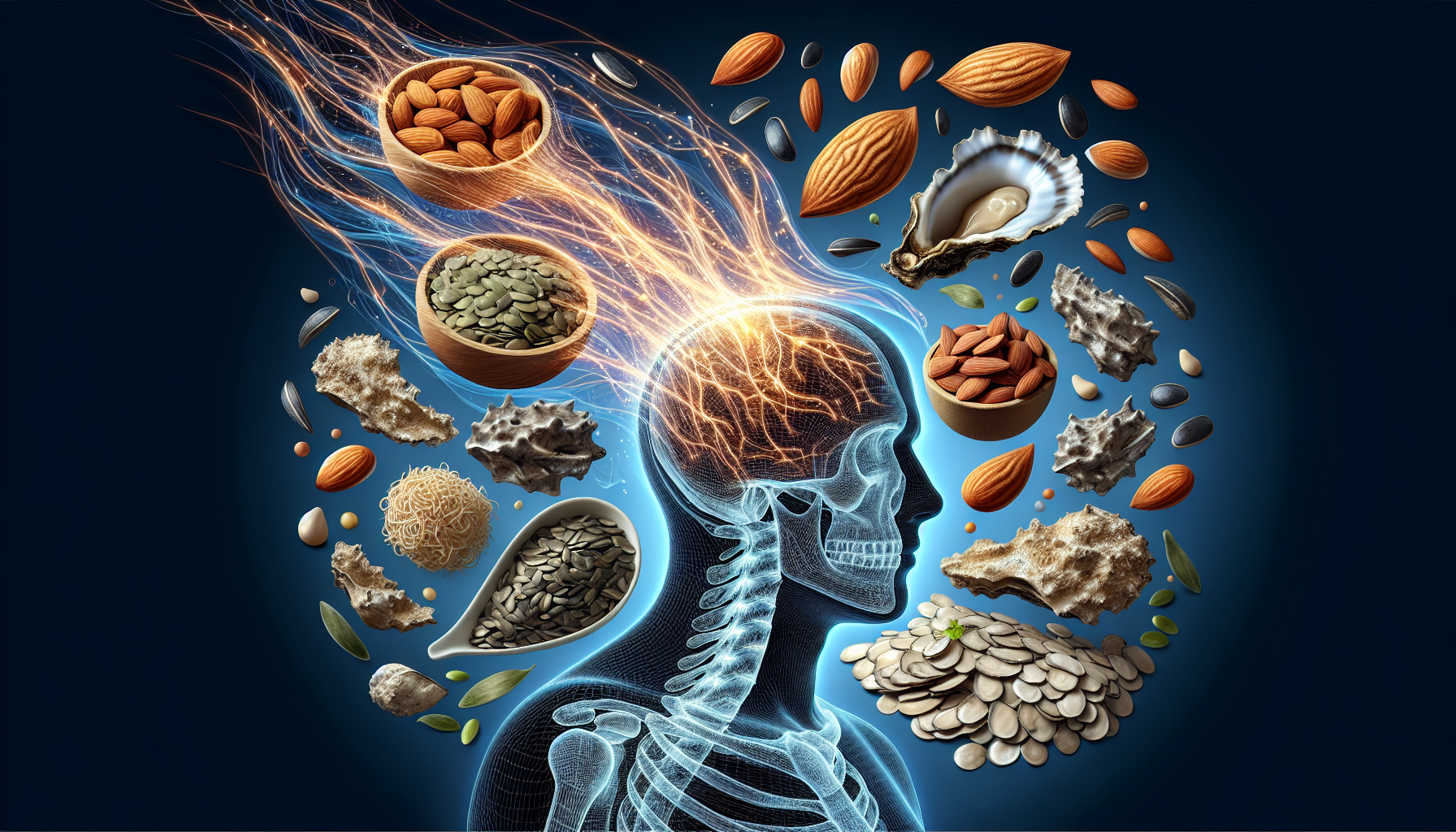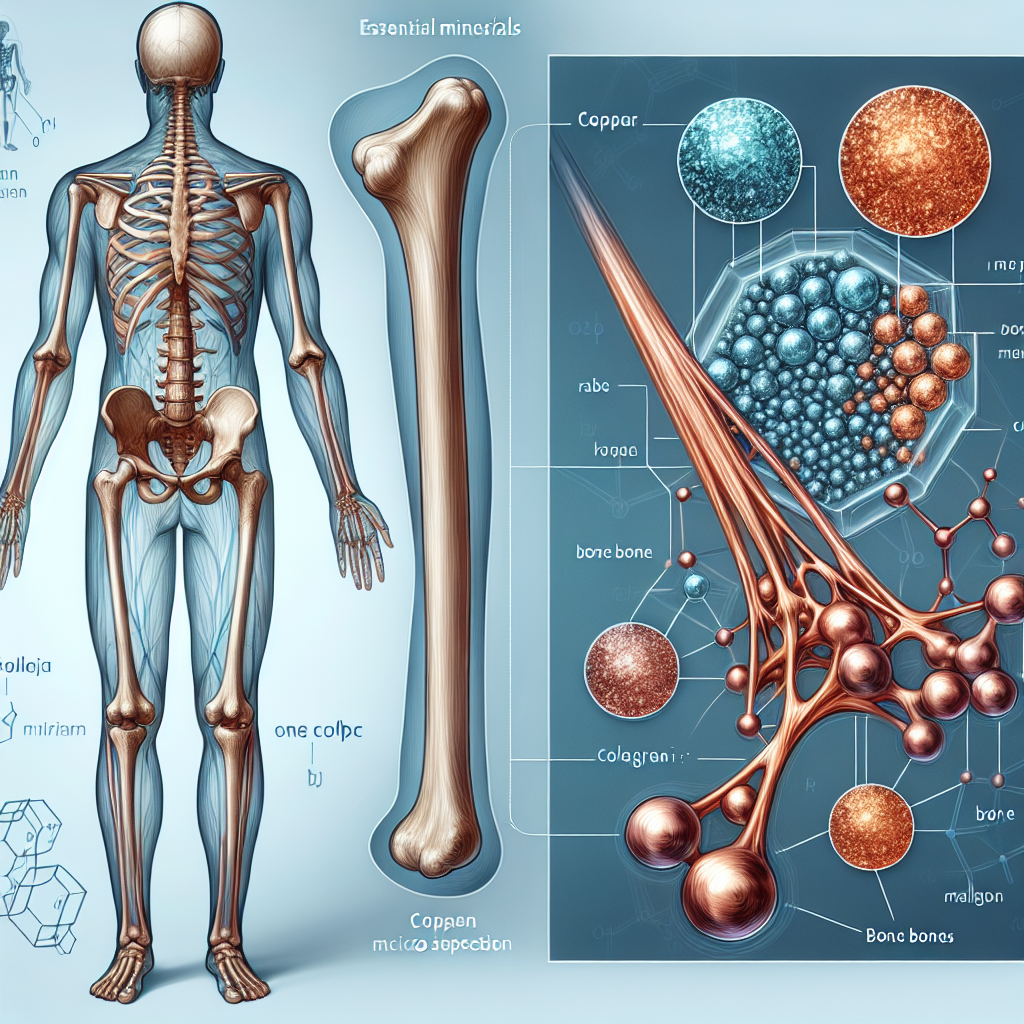Copper is a trace mineral essential for the human body, playing a pivotal role in various physiological processes. While it is widely known for its importance in maintaining proper nerve function and producing red blood cells, copper’s influence on bone metabolism is a facet that often goes underappreciated. This article delves into the multifaceted role of copper in bone health, exploring the mechanisms through which it contributes to maintaining bone density and integrity, and how it interplays with other vital nutrients in bone metabolism.
Copper’s Function in Bone Health
The body’s skeletal system is a dynamic structure, continually undergoing processes of formation and resorption. Copper acts as a cofactor for enzymes that are critical in the production of connective tissue and the maintenance of bone strength. One such enzyme, lysyl oxidase, is responsible for the cross-linking of collagen and elastin, which are essential for the structural integrity of bones.
Copper’s role extends to the activation of osteoblasts, the cells tasked with bone formation. These cells utilize copper-dependent enzymes to lay down new bone material. Consequently, a copper deficiency can lead to abnormalities in bone formation and strength, potentially increasing the risk of osteoporosis and fractures.
Synergistic Relationships with Other Nutrients
Copper doesn’t work in isolation; it interacts synergistically with other nutrients to promote bone health. For instance, it works in tandem with zinc, which also plays a significant role in bone formation and mineralization. Zinc’s presence is crucial for the activation of osteoblasts, and the two minerals often work closely in enzymatic reactions related to bone tissue synthesis.
Calcium and vitamin D are well-known players in the bone health arena, with their roles in bone density being extensively documented. Copper’s interaction with these nutrients is less direct, but it remains vital; copper-dependent enzymes might influence the matrix of bone tissue where calcium is deposited.
For more comprehensive insights into the nutrients pivotal for bone health, readers are encouraged to explore Bone Health where a holistic approach to maintaining strong bones is discussed in detail.
The Impact of Copper Deficiency and Excess
While a deficiency in copper can lead to impaired bone metabolism, an excess is equally detrimental. Copper toxicity can disrupt the delicate balance of other minerals, such as zinc and iron, and can lead to oxidative stress — a state that can adversely affect bone cells and overall bone health.
Diagnosing and Addressing Copper Imbalances
Diagnosing copper imbalances involves blood tests to measure copper levels, ceruloplasmin (a copper-carrying protein), and liver function tests. Healthcare professionals may also assess dietary habits and exposure to sources of copper, including drinking water and dietary supplements.
For those with a deficiency, dietary modifications can be recommended. Foods rich in copper include shellfish, nuts, seeds, and whole-grain products. In some cases, copper supplements might be prescribed, but these should be taken under medical supervision to avoid toxicity.
Conversely, for those with excessive copper intake, reducing foods high in copper and using water filters that remove copper may be advised.
The Broader Context of Bone Health
Copper’s role in bone metabolism is just a fragment of a much larger picture. Bone health is a complex interplay of nutrition, lifestyle, and genetics. Understanding the nuances of how various factors contribute to bone density and strength is essential for maintaining long-term skeletal health.
For instance, weight-bearing exercises are known to increase bone density and strength. To understand more about this connection, readers can refer to the article on The Benefits of Weight Lifting for Bone Density.
As we age, bone density naturally decreases, making an understanding of bone metabolism increasingly important. Strategies to Prevent Bone Loss in the Elderly provides valuable insights into how seniors can maintain bone health through nutrition and lifestyle adjustments.
Moreover, the onset of menopause brings about hormonal changes that can significantly impact bone density. The article Understanding the Effects of Menopause on Bone Mass offers a deep dive into how these physiological changes affect women’s bone health and what can be done to mitigate the risks associated with menopause.
Advancements in Research and Further Reading
Recent studies continue to shed light on the multifaceted role of copper in bone health. Researchers are exploring the potential of copper-based compounds in the treatment and prevention of osteoporosis. To further understand the innovative directions of bone health research, several high-quality resources are recommended:
- The National Institutes of Health (NIH) provides an extensive database of research on the role of trace minerals in bone health.
- The International Osteoporosis Foundation offers a wealth of information on current research and guidelines for maintaining bone health.
- The American Society for Bone and Mineral Research is a professional society dedicated to advancing the science of bone health, with numerous resources and publications available.
Conclusion
The intricate relationship between copper and bone metabolism underscores the importance of a balanced diet and awareness of micronutrient intake. By understanding the role of copper and its interplay with other nutrients, individuals can make informed decisions about their diet and lifestyle to support bone health.
As research advances, the potential for new therapies and preventative measures continues to grow, offering hope for those at risk of bone-related diseases. It’s clear that copper, though small in quantity within the body, has a substantial impact on our overall bone health and warrants attention for anyone looking to maintain a strong and healthy skeletal system.



